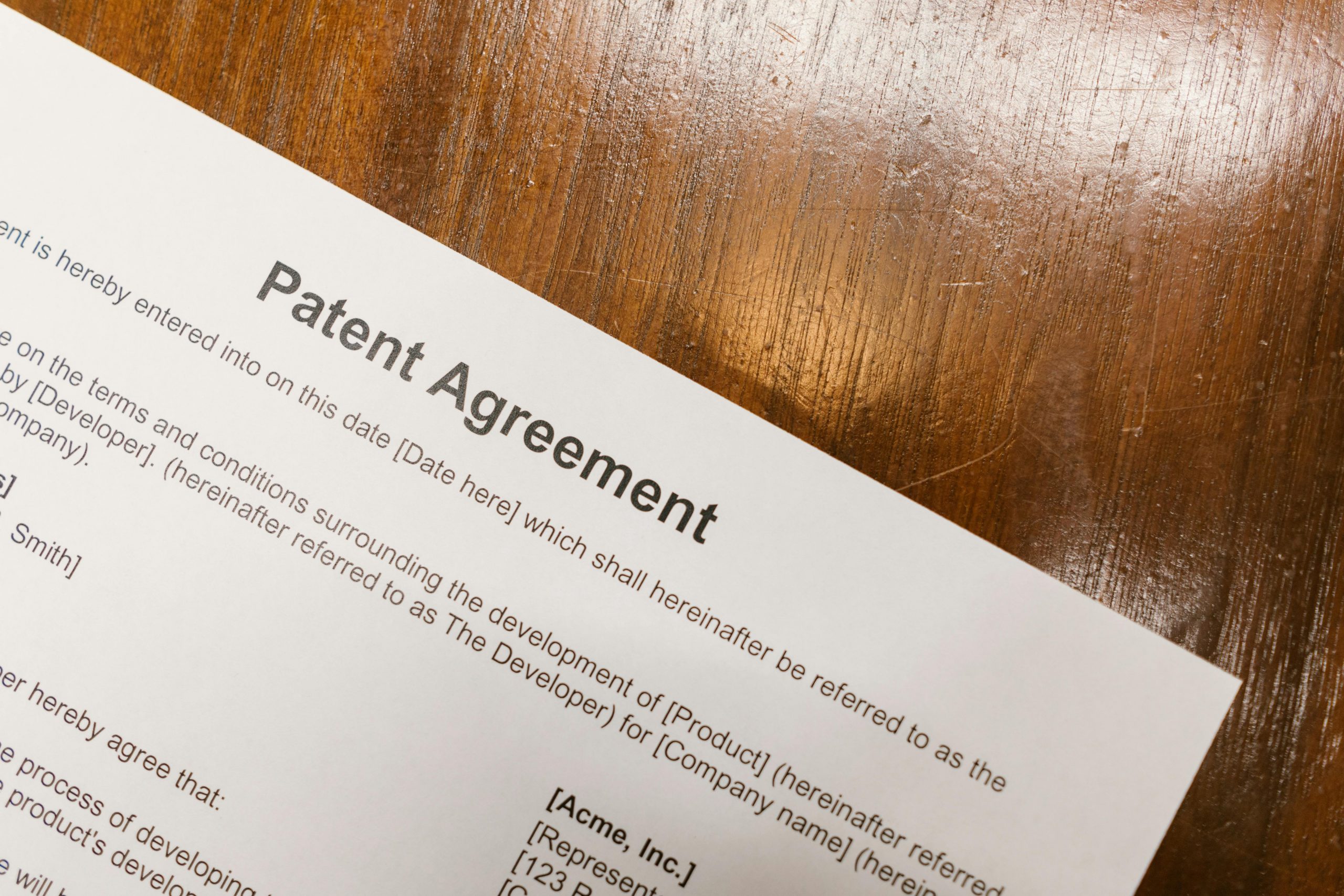- Design patents protect appearance, not function: They safeguard the ornamental or aesthetic aspects of a product, unlike utility patents, which cover functionality.
- Eligibility requires novelty and originality: Only new, original, and non-functional designs applied to an article of manufacture qualify for protection.
- Documenting and filing correctly is critical: Detailed sketches, photos, prototypes, and precise patent drawings improve the chances of approval.
- The patent process takes time and investment: Expect 12–24 months for approval, with costs ranging from USPTO fees to attorney services.
- Enforcement is key to protection: Monitoring the market, sending cease-and-desist letters, and taking legal action ensure your intellectual property is defended.
- International protection requires strategic planning: Design patents are territorial, so filing in target countries or using the Hague Agreement is necessary for global coverage.
- Understanding design vs utility patents guides decisions: Knowing the difference helps inventors choose the right type of patent to maximize legal and business benefits.
Designs are a crucial element of innovation, giving products a unique appearance that can differentiate them in a competitive marketplace. But how do you ensure that your creative work is protected from duplication or misuse? Understanding how to get a patent on a design and safeguard your intellectual property is vital for inventors, entrepreneurs, and creators. This guide breaks down the process in clear, actionable steps.
What Is a Design Patent and Why Does It Matter?
A design patent protects the ornamental or aesthetic aspects of an object rather than its functional features. While utility patents focus on how something works, design patents emphasize how it looks. Understanding the differences in design patent vs utility patent is crucial for inventors and creators because it determines the type of legal protection best suited for their work.
Key points about design patents:
- They cover new, original, and ornamental designs for an article of manufacture.
- Protection typically lasts 15 years from the date of grant in the U.S.
- They prevent others from making, using, or selling a design that is substantially similar to yours.
Obtaining a design patent is an essential step in protecting your intellectual property because it allows you to legally prevent competitors from copying your unique product designs. By understanding the differences between design and utility patents, you can make informed decisions about which type of patent aligns with your innovation goals.
What Can Be Patented as a Design?
Not every design qualifies for a patent. To determine if your creation is eligible, consider the following criteria:
- Novelty: The design must be new and not previously disclosed or publicly available.
- Originality: You must be the creator of the design.
- Ornamentality: The design must be aesthetically appealing and non-functional in nature.
- Applicability: It must be applied to an article of manufacture.
Examples of patentable designs:
- Furniture pieces with unique shapes or patterns
- Electronic device casings with distinctive appearances
- Jewelry designs and wearable accessories
- Packaging with original visual features
By understanding what qualifies, you can focus your efforts on designs that are likely to be approved.
How to Get a Patent on a Design

Starting the design patent process can seem complex, but it can be broken down into manageable steps:
- Document Your Design: Keep detailed records, including sketches, photos, and any prototypes.
- Conduct a Patent Search: Check existing patents to ensure your design is unique. The USPTO and Google Patents are useful tools.
- Prepare Your Application: This includes drawings, descriptions, and claims about your design.
- File with the USPTO: Submit your application electronically through the USPTO’s system.
- Respond to Office Actions: Address any objections or questions from the patent examiner.
Tips for efficiency:
- Keep a detailed design notebook with dates and revisions.
- Use high-quality, accurate drawings to depict every aspect of your design.
- Consider working with a patent attorney to avoid mistakes that can delay approval.
What Are the Different Types of Design Patent Drawings?
Design patent applications rely heavily on drawings, which must clearly represent the invention’s appearance. There are a few types of acceptable drawings:
- Black-and-white line drawings: Most common and standard for formal submissions.
- Shaded drawings: Useful for showing depth or contours.
- Photographs: Rarely accepted unless the design cannot be adequately shown by drawings.
Clear, precise drawings can make a significant difference in the success of your application.
How Much Does It Cost to Get a Design Patent?
The cost of a design patent varies depending on whether you use legal assistance and the size of your business. Typical expenses include:
- USPTO filing fees: Small entity $180, large entity $360 (as of 2025).
- Attorney fees: Can range from $1,500 to $3,000 for standard applications.
- Maintenance fees: Design patents do not require maintenance fees like utility patents.
Investing in professional assistance can save time and increase the likelihood of approval, making it a worthwhile consideration for serious inventors.
How Long Does It Take to Get a Design Patent?
The process of obtaining a design patent is usually faster than a utility patent but still requires patience. On average:
- Filing to first office action: 6–12 months
- Total process: 12–24 months from filing to grant
- Delays may occur due to backlogs or objections raised by examiners
Planning for this timeline helps manage expectations and ensures your business strategy aligns with the patent approval process.
What Are Common Challenges When Filing a Design Patent?
Filing a design patent can involve obstacles, including:
- Prior art conflicts: Existing patents may be similar to your design.
- Insufficient drawings or descriptions: Can lead to rejection or delays.
- Office actions: Official communications requiring clarification or modification of your application.
- Infringement disputes: Enforcing your design patent requires monitoring competitors.
Understanding these challenges allows you to prepare in advance and respond effectively.
Can You Protect Your Design Internationally?
Design patents are territorial, meaning protection in one country does not automatically extend to others. For international protection:
- Use the Hague Agreement: Allows a single application to cover multiple countries.
- File in each country: Some countries require separate applications and fees.
- Consider strategic markets: Focus on countries where you plan to sell or manufacture products.
International protection ensures that your intellectual property is defended beyond domestic borders.
How to Enforce Your Design Patent Rights
Obtaining a patent is only part of protecting your design; enforcement is equally important. Steps include:
- Monitoring the market: Keep track of competitors and potential infringements.
- Sending cease-and-desist letters: Often the first step to resolve disputes.
- Filing a lawsuit: If necessary, take legal action for infringement.
- Licensing or selling rights: Monetize your design while retaining legal protection.
A proactive approach ensures your investment in design innovation is safeguarded.
What Is the Difference Between a Design Patent and a Trademark?
Understanding the distinction helps determine the best form of protection for your work:
| Feature | Design Patent | Trademark |
| Focus | Appearance of a product | Brand identity (logo, name) |
| Duration | 15 years from grant | Potentially indefinite with renewal |
| Purpose | Prevent copying of design | Prevent brand confusion |
| Legal Protection | Right to exclude copying | Right to exclusive use of mark |
Both tools can complement each other, especially for products where the design and brand are key selling points.
How Does Intellectual Property Law Support Innovation?

Strong intellectual property rights encourage creativity and investment by providing:
- Legal ownership and protection: Ensures creators can profit from their work.
- Market advantage: Exclusive rights prevent competitors from copying successful designs.
- Licensing opportunities: Allows monetization through agreements.
- Investor confidence: Patented designs demonstrate tangible assets.
By understanding how to get a patent on a design, inventors strengthen their ability to innovate and compete.
Tips for a Successful Design Patent Application
To improve the chances of your application being approved:
- Start with a thorough patent search to ensure novelty.
- Use detailed, precise, and professional drawings.
- Describe the design clearly, highlighting the ornamental aspects.
- Consider working with a qualified patent attorney.
- Keep records of development and dates of creation.
- Monitor related patents for changes or new filings.
Following these best practices can prevent common pitfalls and accelerate approval.
FAQs About Design Patents
Q: Can I patent a design I created years ago?
A: Only if it hasn’t been publicly disclosed or sold more than one year prior to filing in the U.S.
Q: Can a design patent be renewed?
A: No, design patents are not renewable. Protection lasts for 15 years from the grant date.
Q: Do I need a lawyer to file a design patent?
A: It is not required, but using a patent attorney increases accuracy and reduces risk of rejection.
Q: Can I sell or license my design patent?
A: Yes, design patents can be sold or licensed, creating potential revenue streams.
Q: How do I know if someone is infringing my design patent?
A: Compare the design with your patent claims. Legal assistance may be required to confirm infringement.
Final Thoughts
Securing a design patent is a vital step for inventors and creators to protect the unique visual elements of their products. Understanding the process, from documenting your design to filing with the USPTO, ensures your intellectual property is legally defended.
While the process can be complex, careful planning, professional guidance, and strategic enforcement can safeguard your creativity and investment. By taking these steps, you not only protect your work but also position your business for long-term success in a competitive marketplace.
Investing in how to get a patent on a design is not just about legal protection—it’s about valuing your creativity, securing your market position, and building a sustainable foundation for innovation.



